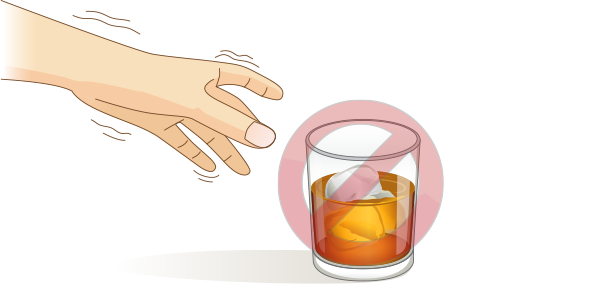
There are no lab tests that are diagnostic for alcohol withdrawal. A serum ethanol level should be considered only if you are unsure of the diagnosis. Even then, there is no single ethanol level at which withdrawal is impossible. Chronic alcohol users may experience alcohol withdrawal at serum ethanol levels that are intoxicating to the naive drinker. In mild cases of withdrawal, blood work is rarely helpful and is unlikely to change management. However, in patients with severe alcohol withdrawal, especially patients with delirium tremens, blood work can help rule out other causes of delirium.
Explore This Issue
ACEP Now: Vol 37 – No 09 – September 2018There are no lab tests that are diagnostic for alcohol withdrawal. A serum ethanol level should be considered only if you are unsure of the diagnosis. Even then, there is no single ethanol level at which withdrawal is impossible.
2. Use a standardized, clinically guided approach to assess severity and guide treatment.
The Clinical Institute Withdrawal Assessment Scale for Alcohol (CIWA-Ar) protocol is a 10-item scale. It has been well validated in patients with alcohol withdrawal, improving the quality and consistency of care, but should not be used for patients with delirium tremens or as a diagnostic tool.5
The CIWA-Ar calls for patients to be assessed hourly and treated if the total score is 10 or greater. When two sequential scores are less than 10, discharge may be considered. Protocols using the CIWA-Ar help to standardize care, ensure clinicians identify the appropriate clinical features, and monitor treatment response. CIWA-Ar assesses 10 clinical features: nausea and vomiting, paroxysmal sweats, agitation, anxiety, visual disturbances, tremor, tactile disturbance, headache, auditory disturbances, and orientation and clouding of the sensorium.
Some clinicians find the CIWA-Ar protocol too labor-intensive. The SHOT (Sweating, Hallucinations, Orientation, and Tremor) protocol is a shorter one, which may be easier to implement in the emergency department. It is a four-item scale that correlates well with the CIWA-Ar score and takes about one minute to apply.6
3. Ensure that patients are fully treated prior to ED discharge.
If a patient has two sequential CIWA-Ar scores (two hours apart) less than 10 and there are no concerning risks for deterioration, consider discharging the patient from the emergency department. The patient’s tremor should be minimal or resolved before discharge, regardless of the CIWA-Ar score, as those with significant tremor are at risk of complications of alcohol withdrawal if discharged from the emergency department.
Benzodiazepines are first-line medications for treating patients with alcohol withdrawal. A Cochrane meta-analysis found that benzodiazepines are at least as effective as alpha-blockers and carbamazepine at preventing seizures and delirium tremens.7 The drug of choice is diazepam because it has a long half-life (100 hours) and carries a decreased risk of developing serious withdrawal symptoms once the patient is discharged. Diazepam also has a faster onset of action than lorazepam. Nonetheless, it is important to remember that diazepam should be avoided in patients with liver failure or a history of liver failure.
Pages: 1 2 3 4 | Single Page




No Responses to “4-Step Approach to Treating Alcohol Withdrawal”